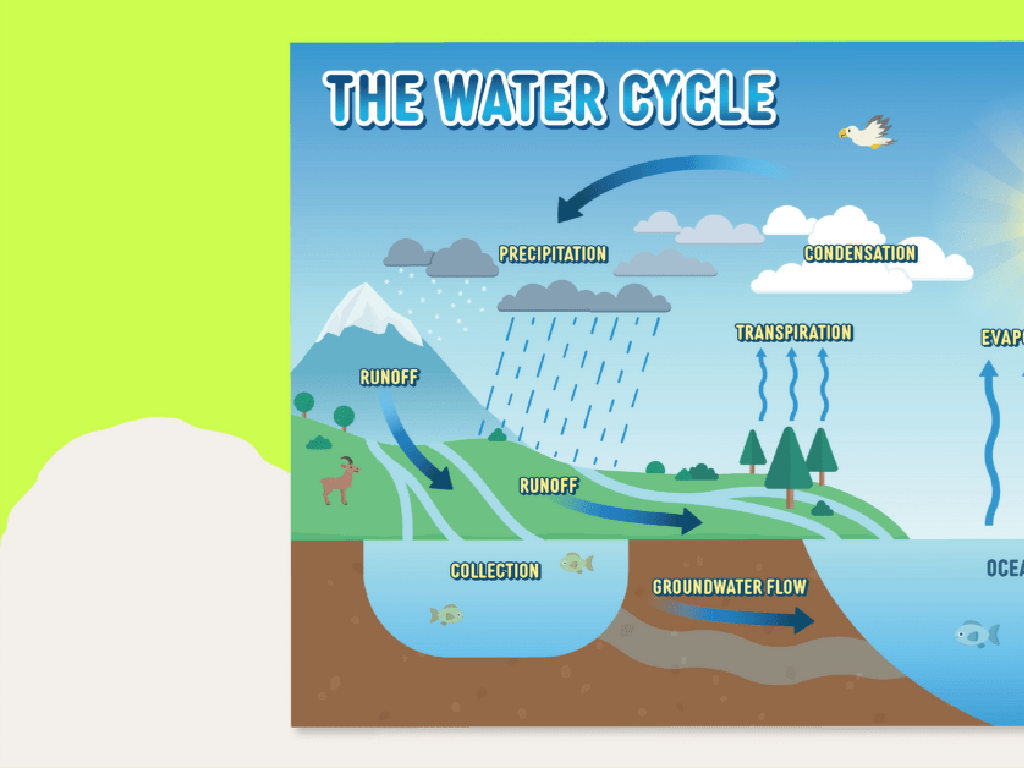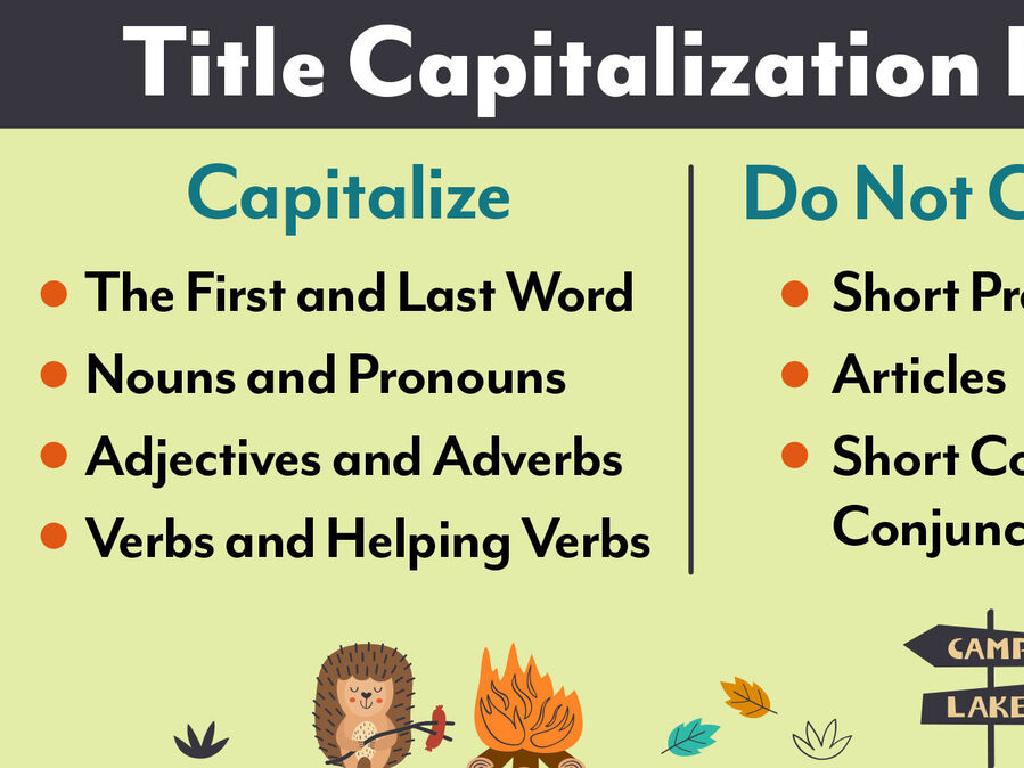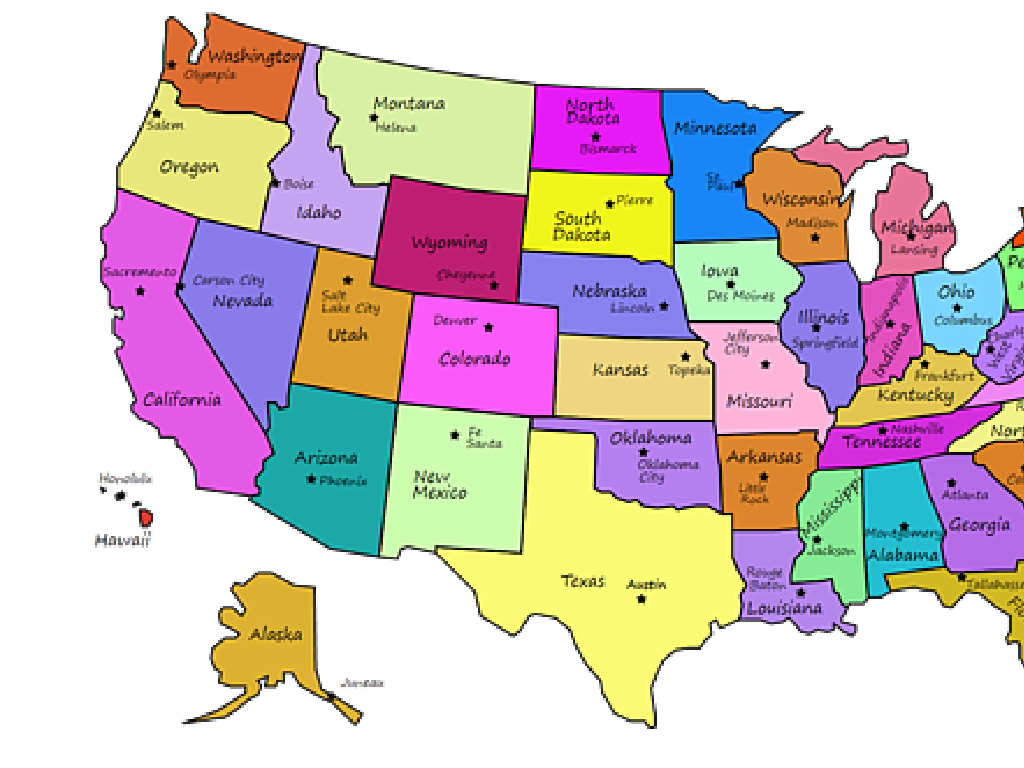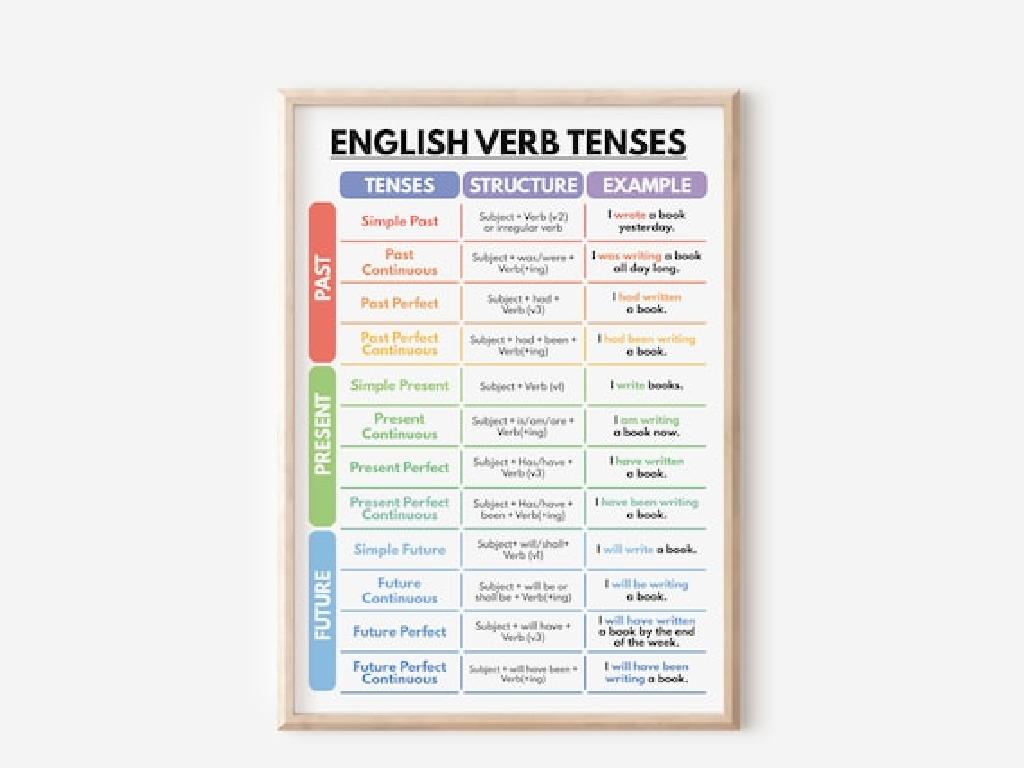Write And Solve Equations That Represent Diagrams
Subject: Math
Grade: Eighth grade
Topic: One-Variable Equations
Please LOG IN to download the presentation. Access is available to registered users only.
View More Content
Introduction to One-Variable Equations
– Basics of one-variable equations
– An equation like x + 3 = 7 shows a relationship where x is unknown.
– Equations in real-life contexts
– For example, calculating total cost (x) for movie tickets at $9 each for 7 friends.
– Significance of variables
– Variables represent unknowns we aim to solve for, like ‘x’ in expenses.
– Solving equations with diagrams
|
This slide introduces the concept of one-variable equations, which are the foundation of algebra. Emphasize that equations are not just abstract mathematical constructs; they model real-world situations. Variables are placeholders for values we don’t yet know but can solve for. In real-life, this could be budgeting for expenses, measuring ingredients for a recipe, or calculating distance traveled. Encourage students to think of variables as tools that help us find answers to everyday problems. Introduce the concept of using diagrams to represent and solve equations, which will be explored in subsequent slides. This visual approach helps students to better understand and engage with the material.
Representing Diagrams with Equations
– Identify variables in diagrams
– Variables represent quantities in diagrams, like the weight on a seesaw.
– Translate diagrams to equations
– Use algebra to express relationships shown in the diagram.
– Example: Seesaw balance equation
– A seesaw in balance: if one side has 2x and the other 10, the equation is 2x = 10.
– Solve the seesaw equation
– Find the value of x that keeps the seesaw balanced, solving for x gives x = 5.
|
This slide introduces students to the concept of representing visual information, specifically diagrams, with mathematical equations. Start by identifying variables that represent key quantities in the diagrams. Then, guide students on how to translate the visual information into algebraic equations. Use the seesaw balance problem as a relatable example to show how both sides of a seesaw can be represented by an equation. Emphasize that the goal is to find the value of the variable that maintains balance. Encourage students to set up and solve the equation, reinforcing their understanding of one-variable equations and their real-world applications.
Writing Equations from Diagrams
– Identify equation components
– Variables, constants, coefficients, and operators
– Steps to write equations
– Translate diagrams into equations systematically
– Practice with a diagram example
– Use a simple diagram to form an equation
– Solve the written equation
– Apply algebraic methods to find the variable’s value
|
This slide introduces students to the process of writing and solving equations based on diagrams, which is a key skill in algebra. Start by explaining the components of an equation: variables represent unknowns, constants are fixed values, coefficients are numbers multiplying variables, and operators include addition, subtraction, multiplication, and division. Teach students a step-by-step approach to translate visual information from diagrams into mathematical equations. Provide a practice example, such as a balance scale diagram, and guide students through the process of forming an equation from it. Finally, demonstrate how to solve the equation using algebraic methods to find the value of the variable. Encourage students to practice with various diagrams to strengthen their understanding.
Solving Equations with Diagrams
– Methods for one-variable equations
– Use substitution, elimination, or graphical methods
– Inverse operations in solving
– Apply addition, subtraction, multiplication, division inversely
– Practice: Diagrams to equations
– Translate visual information into algebraic expressions
– Step-by-step solutions
– Work through examples for clear understanding
|
This slide introduces students to various methods for solving one-variable equations, emphasizing the use of inverse operations. Students should understand that equations can be solved by ‘undoing’ the operations performed on the variable. The practice section is crucial, as it allows students to apply what they’ve learned by translating diagrams into equations and then solving them. Provide step-by-step guidance on how to approach the diagrams, set up the corresponding equations, and solve using inverse operations. Encourage students to verbalize their thought process as they work through the examples to reinforce their understanding.
Checking Your Solutions
– Importance of verifying answers
– Steps to substitute back
– After solving, replace the variable with your solution to see if the equation balances.
– Practice with class examples
– We’ll solve equations as a class and check our work together.
– Ensure accuracy in solutions
|
This slide emphasizes the significance of checking work after solving equations. It’s crucial for students to understand that finding an answer isn’t the end; verifying it ensures accuracy and reinforces their understanding of the concepts. Teach students the method of substituting their solution back into the original equation to see if it holds true. During class practice, provide a variety of equations for students to solve and then check their solutions. This will help them become more confident in their ability to solve and verify equations. Offer guidance and support as they work through the practice problems, and encourage peer discussion to facilitate collaborative learning.
Diagrams & Equations Challenge: Group Activity
– Solve real-world problems with diagrams
– Create a diagram and an equation
– Draw a scenario, then write an equation that represents it
– Present your solution to the class
– Explain your thinking and how you solved the equation
– Collaborate and learn from peers
|
This class activity is designed to encourage collaborative problem-solving and application of one-variable equations to real-world scenarios. Divide the class into small groups and provide each with a different problem that can be represented visually. Students will create a diagram to illustrate the problem and then write an equation that corresponds to the scenario. After solving the equation, each group will present their diagram, equation, and solution to the class, explaining their process and reasoning. As a teacher, facilitate the activity by providing guidance and ensuring each group understands the task. Possible activities could include budgeting a school event, calculating distances using a map, or predicting the growth of a plant over time. This hands-on approach helps students see the practical application of math in everyday life.






